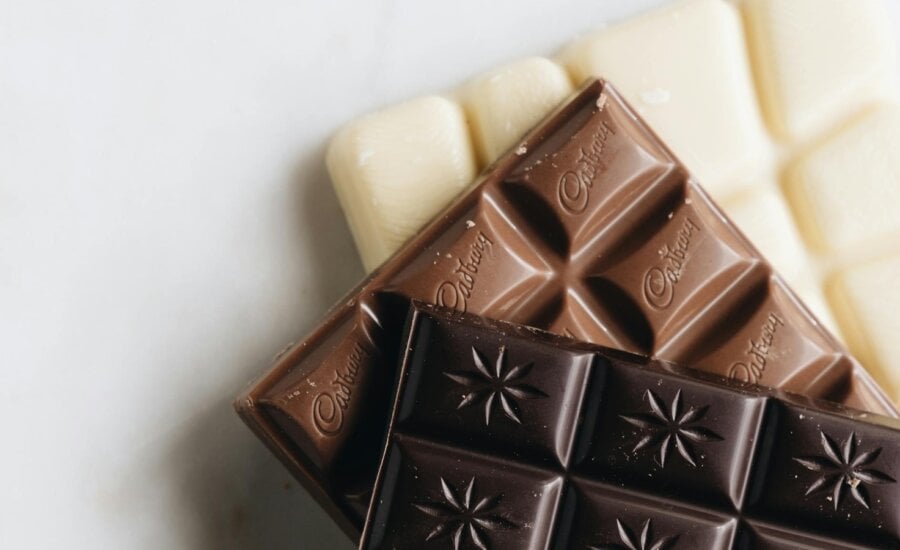Why is chocolate getting so expensive?
Canadian chocolate shoppers will be hard-pressed to find any deals this year. Here’s why prices are climbing, and what types of chocolates are most expensive.
Advertisement
Canadian chocolate shoppers will be hard-pressed to find any deals this year. Here’s why prices are climbing, and what types of chocolates are most expensive.

Chocolate is a staple at Easter, Hanukkah, Diwali and plenty of other holidays, but the cost has been going up. Global prices have hit highs not matched in nearly five decades. At the time of this writing, the retail price for chocolate in Canada ranges from $19.92 to $66.41 per kilogram (or $9.03 to $30.12 per pound), according to food sourcing platform Selina Wamucii. And Statistics Canada reports that the price of confectionary items rose more than 9% between January 2023 and 2024, while overall inflation for groceries grew 3.4%.
Why is chocolate getting so expensive? A lot of ingredients go into a chocolate bar, including sugar and milk, but the one which gives chocolate its namesake—cocoa—is in particularly short supply at the moment.
Thanks to a combination of bad workplace conditions, climate change and insatiable global demand, cheap chocolate will be in very short supply, and experts aren’t sure when it’ll improve. Here’s how we got here, and how you might be able to get the most bang for your buck the next time you’re shopping for chocolate.
Basically, there isn’t enough of it on the market. Over half of the world’s cocoa, the key ingredient in chocolate, is grown in just two West African countries—Côte d’Ivoire and Ghana. If you count all countries in the West African “cocoa belt,” it comes out to around 80% of the world’s supply.
Most of the farmers growing this cocoa are very poorly paid, which has some seeking alternative sources of income for their land. According to a 2023 report from Corporate Accountability Lab on West Africa’s cocoa industry, hired workers in Côte d’Ivoire earn about USD$0.89 to USD$1.34 per day. Farmers sometimes cannot afford to hire paid help, and rely on family members to harvest their crops. To make extra money, farmers sometimes give their fields to illegal gold miners for cash, which degrades production.
To make matters worse, Côte d’Ivoire and Ghana are facing disastrous growing conditions for cocoa. Last year’s El Niño weather event left the West African region hotter than normal. Unpredictable rainfall mixed with dry spells is also wreaking havoc on cocoa tree growth. And swollen shoot disease, which destroys cocoa trees and is spread by insects, is getting worse in Côte d’Ivoire.
With the global market so dependent on this region, any disruptions mean rising cocoa prices. This week, the going rate for cocoa beans nearly hit USD$10,000 a ton on the New York Futures Exchange. (Futures are derivatives; they’re contracts to buy or sell an asset for a set price at a later date.) Just last summer, it was around USD$2,500 a tonne. And demand isn’t letting up. The global chocolate market is expected to grow by about 4% annually between 2024 and 2030, according to Grandview Research.
Canadian shoppers also have to deal with the various reasons why groceries are expensive—not just chocolate. Not only is Canada’s grocery market very concentrated, and therefore more vulnerable to price-fixing, but the sheer size of our country means it isn’t cheap for food suppliers to send their products to market.
Add all of these problems together, and Canadian chocolate shoppers will be hard-pressed to find any deals this year.
The cacao shortages affect all chocolate products, so you can expect to see prices jump across the board. That said, exact prices depend on how much cocoa is actually in your chocolate bar of choice. Dark chocolate, for instance, tends to have a higher concentration of cocoa than milk chocolate. The former might contain anywhere from 50% to 90% cocoa solids, while milk chocolate is closer to 10% to 50%, according to Harvard University’s T.H. Chan School of Public Health. Both types of chocolate also contain cocoa butter.
The one chocolate product that will be spared the worst of this year’s price hikes is white chocolate because it doesn’t contain any cocoa. However, the going rate of white chocolate is affected by a shortage of another critical ingredient used in nearly every chocolate treat found on the shelves: sugar.
While it’s impossible to say exactly how much your local grocery store or confectionary shop will raise prices, several major food retailers and producers have admitted to hiking prices. Hershey and Mondelēz, which makes Cadbury Easter eggs, have both pointed to rising cocoa prices as a strain on their operations, according to a recent report. Sobeys’ owner Empire Co. recently told its investors that rising cocoa and sugar prices would “inevitably affect the consumer.”
If you’re looking for a deal on chocolate this year, it might be best to stay away from cocoa-heavy chocolate or chocolate with very high sugar content. (Thought those were the only kinds of chocolate? Us, too.) Also, stock up as early as possible in case the Easter rush clears out your favourite brands, and do your best to use coupons, price-match and order in bulk wherever possible.
Share this article Share on Facebook Share on Twitter Share on Linkedin Share on Reddit Share on Email